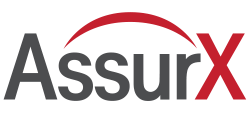July 26, 2024
Manufacturers widely view process improvement frameworks like Lean as the solution to improving productivity and performance by reducing variation and waste in manufacturing processes.
Lost paperwork and information, an extensive backlog of complaints and corrective actions, manual processes slowing down improvement—all of these and more directly oppose the spirit of Lean.
Quality management system (QMS) automation presents a solution to these all-too-common problems, underpinning Lean efforts by providing a mechanism for standardizing processes, executing corrective action, monitoring quality metrics, and more.
In this context, this article examines the role of a digital QMS in supporting Lean manufacturing initiatives, including how it can help manufacturers:
- Standardize their processes
- Reduce waste
- Foster continuous improvement
- Ensure a customer focus
We’ll also look at the one key ingredient necessary in a QMS for advancing your Lean initiatives, and how to find a robust QMS that’s up to the job.
Watch a free webinar on Elevating Manufacturing Excellence: Transformative Strategies for Quality Management Systems
Standardizing Processes and Procedures: Building the Foundation
Standardized work is foundational to both Lean manufacturing and the QMS. It’s also step one in the Plan-Do-Check-Act process approach upon which Lean is built, requiring you to document your processes and procedures so they can be executed consistently every time. Only once those processes are documented can you effectively analyze them, compare them against practices on the plant floor and identify opportunities for improvement.
Every step of the quality process ties back to standards, making it essential that manufacturers have a well-organized system for developing and maintaining them.
In the past, companies have relied largely on shared drives for tracking important documents, but this approach poses several problems, including:
- Uncontrolled document changes with no visibility into who changed documents, when or why
- Versioning errors due to people accessing outdated documents
- Time wasted searching for important documents such as standard operating procedures (SOPs) and specifications
- Long document cycle times due to manual handoffs and complex revision processes
Document management software within an automated QMS eliminates these issues and sets the stage for a leaner process by:
- Creating a central repository to manage and secure documents across their entire lifecycle
- Providing a single source of truth for ensuring that users always access the most updated, correct version of documents
- Streamlining the collaboration process to speed up document cycle times
- Making it easy to alert and train staff on new documents or document updates
Reducing the 8 Wastes of Lean
At the heart of Lean manufacturing is identifying and minimizing waste, defined as anything that doesn’t add value for the customer. In particular, Lean zeroes in on what is referred to as the eight wastes, which can be remembered with the acronym TIMWOODS:
- Transportation: Unnecessary movement of people and materials often means wasted time and potential damage.
- Inventory: Excess inventory ties up valuable space, capital, and resources.
- Motion: Unnecessary motion in the production process can lead to ergonomic injuries and damage to equipment or products.
- Waiting: Waiting on people, information, materials, and equipment can create significant waste in the form of delays.
- Overproduction: Manufacturing more than is necessary creates excess inventory and associated costs.
- Overprocessing: Adding more to the process than is required by the customer results in wasted time and resources.
- Defects: Scrap and rework as a result of defects represents significant waste in organizations, consuming resources that could be otherwise be used on salable products.
- Skills: Underutilizing your team’s knowledge and skills is a waste of talent that should be used to drive the organization’s goals forward.
Using an automated QMS directly addresses several of these wastes, particularly waiting, defects, and skills:
- Waiting: Collaboration tools and the ability to access data on the spot reduce waiting on manual handoffs, approvals, and signatures to streamline the quality process overall
- Defects: More effective tracking of quality issues, such as nonconformance reporting, complaint tracking, and corrective action tools enables proactive improvements to achieve downstream reductions in defects and quality costs.
- Skills: Employee training tracking software gives teams a structured process for fostering employee development. It also helps companies get a comprehensive view of employee capabilities, so they can be more efficiently used throughout the plant.
In addition to the above, the QMS also provides important data for addressing other Lean waste. Let’s say, for example, complaint data can be tied back to transportation issues, leading to a deeper look at where the process can be streamlined. Similarly, EHS incident data might reveal a spike in ergonomic injuries related to a specific process or production line, providing important direction into where unnecessary motion exists in the process.
Fostering Continuous Improvement
Kaizen, a Japanese term that translates to “continuous improvement,” is a philosophy closely related to Lean in that it focuses on waste reduction and the Plan-Do-Check-Act cycle. What makes Kaizen unique is its emphasis on engaging teams in making incremental improvements, which add up to larger scale changes over the long term.
QMS automation facilitates kaizen in several key ways:
- Streamlined processes: Eliminating manual tasks and reducing the administrative burden frees up your team’s time to focus on improvement projects, rather than being bogged down by paperwork. Automated workflows promote consistency and process stability, reducing variability and resulting waste.
- Analytics and insights: The ability to access real-time quality metrics allows manufacturers to find problems and improvement opportunities more easily, as well as make data-driven decisions. Data-driven improvement and waste elimination are central to Lean, and provide quantifiable evidence of the value of Lean projects.
- Improved accountability: Task tracking with clearly defined responsibilities, action items, and deadlines helps keep the improvement process on track and enhances accountability across the entire team.
- Root cause analysis: Root cause analysis tools built into the QMS such as 5 Whys and 8D foster continuous improvement through a structured process that can be applied consistently to different types of problems. Being able to pull up results of previous investigations can help identify existing solutions to similar problems, or deepen the analysis when previous solutions haven’t worked.
- Corrective and preventive action (CAPA): CAPA software provides a foundation for quality improvement by giving teams the tools to correct problems quickly and minimize the risk of recurrence. Effectiveness checks and preventive actions ensure that companies are holding improvements in place.
CAPA tools in the QMS are especially important from a kaizen perspective, in that they provide a closed-loop process necessary for continuous improvement. Within the QMS, quality teams can:
- Catalog, manage and track open issues in one place
- Launch risk assessments from complaints or deviations to assess systemic risks
- Define corrective action workflows based on issue type, department, product, and more
- Integrate with other QMS solutions such as document management and employee training
Ensuring a Customer Focus
The Lean philosophy is based on the idea that organizations exist to deliver value for customers, encouraging practitioners to view every step in the process through this lens.
One issue companies commonly run into with manual or paper-based approaches to quality, however, is that they tend to be reactive in nature. This means that teams spend more time dealing with today’s crisis than proactively improving product quality.
It’s a natural outcome when teams are under pressure to do more with less. However, an automated QMS can help companies do just that while also enabling them to make strategic improvements based on customer feedback.
For example, complaint tracking software in the QMS reduces the administrative burden of tracking complaints so that manufacturers can improve customer satisfaction by:
- Accelerating the resolution of issues and reducing their impact on other customers
- Tracking and trending data that can be used to enhance products and mitigate quality and safety risks
- Capturing feedback from any source, such as email, phone calls, website submissions and field reports, in one centralized location
QMS Software: Why Flexibility Is Key
If you’re looking for QMS software to help define or improve your Lean manufacturing processes, one of the most important elements to keep in mind as you evaluate systems is flexibility.
Why is flexibility so important? It all comes down to process efficiency.
A QMS that’s easily configurable to your process means that you can continuously refine that process over time, whether in response to lessons learned or as part of Lean manufacturing initiatives. If you’re using a QMS that requires you to adapt your process to the software, this will ultimately mean sacrificing some of the efficiencies you’ve worked so hard to achieve.
Functions to look for here include:
- Configurable forms and fields that allow you to standardize how you capture information
- Integration with other enterprise systems such as ERP, MES, LIMS, and more
- Automated workflows that can be mapped directly to your process
Manufacturers should also consider an all-in-one solution that allows them to deploy any QMS process rather than having to purchase individual modules or bundles. Doing so will allow you to automate quality processes in the way that makes the most sense for your business to support your larger Lean priorities.
Conclusion
Deploying a digital QMS as part of your Lean manufacturing strategy can provide a critical foundation for standardizing processes, reducing waste, and fostering continuous improvement. QMS flexibility is the essential ingredient for achieving new efficiencies and strengthening your focus on customer satisfaction. With the right QMS, companies can not only build a foundation for Lean success, but also cultivate a culture of process excellence, engagement, and continuous improvement.
Learn more about Customer Quality Management: How the QMS Can Help
About the Author
Stephanie Ojeda is Director of Product Management for the Life Sciences industry at AssurX. Stephanie brings more than 15 years of leading quality assurance functions in a variety of industries, including pharmaceutical, biotech, medical device, food & beverage, and manufacturing.


